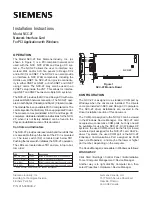
3-8
Bio-Tek FL600
,QVHUWLQJWKH5HSODFHPHQW)LOWHULQWRWKH$GDSWHU
Step 1:
Ensure that the replacement filter is free of dust and smudges. If
not, carefully clean the filter with a cotton swab soaked in alcohol.
Step 2:
Center the replacement filter on top of the retaining ring, and then
place the adapter onto the filter, wide end down. If possible, align
the window on the side of the adapter with the last four digits of
the filter number, so that the four digits will appear in the window.
Step 3:
Place both thumbs on either side of the top edge of the adapter, and
press down very firmly with equal pressure, until the assembly
snaps together.
Step 4:
Insert the shorter node of the tool into the adapter, and press down
firmly to seat the filter.
Step 5:
Install the filter adapter into the filter wheel, as described in the
section entitled Changing Filters Inside the Reader.
$GMXVWLQJ7RS2SWLFHLJKW
Each FL600 model has been factory-configured with a top probe height
that will provide maximum sensitivity for the specified plate thickness.
Should you wish to change plate types, it may be necessary to reset the
probe height to prevent the probe from hitting the plate, or to maximize
sensitivity.
To achieve maximal sensitivity when using the top optical probe it is
necessary to adjust the probe height as low as possible, while still allowing
free movement of the microplate underneath. Follow the directions below
to adjust the top probe height, referring to the diagrams in Figure 3-6.
Step 1:
To withdraw the plate carrier into the instrument, press the plate
carrier retrieval button located on the front underside of the
instrument. Shut off the instrument, and unplug the power cord.
Step 2:
Using the 4 mm hex screw driver provided in the accessories box,
remove the five machine screws holding down the top cover.
These screws are located in the recessed pockets on the underside
edge of the bottom shroud. (See Figure 3-2.)
NOTE 1: Never operate the instrument with the cover off. Operating
the reader without a cover poses a serious shock hazard and may
damage the detection circuit.
















































